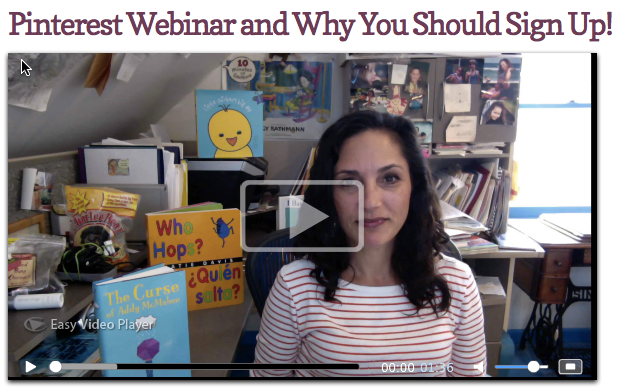Hey there, aspiring children’s book authors! I’m here today to chat about one of my favorite topics—writing a children’s book. Whether you’re brimming with ideas or just starting out, I’ve got you covered. So, grab a cup of coffee (or tea, if you’re like my Picture Book Summit cofounders, Emma Walton Hamilton and Julie Hedlund!) ) and let’s dive into the magical world of children’s literature. 🌟
Choosing the Right Age Group
First things first, you need to know who your audience is. Are you writing for toddlers, preschoolers, or perhaps the middle-grade crowd? Each age group has specific needs and preferences:
- Board Books (Ages 0-3): Think simple words, bright images, and lots of repetitive phrases.
- Picture Books (Ages 3-7): These usually have around 500 words (or closer to 1,000 if nonfiction) and vibrant illustrations.
- Early Readers (Ages 5-7): These are for kids just starting to read on their own. Simple sentences, word repetition, and basic plots are key.
- Chapter Books (Ages 7-9): Short chapters, a more complex storyline, and fewer illustrations, or spot art (I still remember asking Mrs. Lee, our elementary school librarian why we didn’t get pictures in our books once we hit about third grade – that was then. Kids now get more pix!)
- Middle Grade (Ages 8-12): These books delve deeper into character development and have more intricate plots.
Understanding your audience is crucial because it guides your writing style, vocabulary, and even the length of your book.
Developing Your Idea
Now that you know who you’re writing for, it’s time to develop your idea. This is often the most fun (and daunting) part of the process. Here are a few tips to help you flesh out your story idea:
- Brainstorm: Jot down all your ideas, no matter how wild they seem. Don’t worry about organizing them just yet.
- Research: Read other children’s books to see what’s out there and what’s missing (while working on our PJ party–AKA the tech check disguised as a PJ party– for Picture Book Summit, we discovered there was dearth of sports-related and Olympics-related picture books, for example). Check out your local library or bookstore for books published within the last five years for inspiration.
- Ask Questions: What if your character had to solve a problem? What if they met a magical creature? Questions like these can spark great story ideas. WHAT IF…is a great idea-sparker.
- Outline: Once you have a solid idea, create an outline. This doesn’t have to be detailed but should give you a roadmap to follow.
Creating Memorable Characters
Characters are the heart of your story. They need to be relatable and engaging. Here are some tips for creating characters that kids will love:
- Relatability: Make your characters relatable. Even if your character is a talking dinosaur, they should have emotions and experiences that kids can relate to.
- Flaws and Strengths: Give your characters strengths and weaknesses. Perfect characters are boring; flaws make them interesting and relatable.
- Growth: Your characters should evolve over the course of the story. They should learn something new or grow in some way.
Illustrations can also play a huge role in character development, especially in picture books. But unless you’re a professional illustrator, remember it’s the editor’s job to match the right illustrator with your manuscript.
Crafting an Engaging Plot
You’ve got your characters and your idea, now let’s talk plot. For children’s books, a simple yet engaging plot works best. Here are some elements to include:
- Conflict: Every good story needs a conflict, whether an external conflict (e.g., a dragon) or an internal conflict (e.g., fear of the dark).
- Resolution: How does your character solve the conflict? This is the most satisfying part of the story for readers.
- Pacing: Keep the pace quick to hold young readers’ attention. Shorter sentences and plenty of action can help with this.
Writing with Illustrations in Mind
If you’re writing a picture book, remember that the illustrations will do a lot of the storytelling. Here are some tips to keep in mind:
- Leave Room for Illustrations: Don’t over-explain in your text. Leave some things for the illustrator to show.
- Think Visually: Picture the scenes in your head as you write. This will help you create vivid, descriptive text that complements the illustrations.
- Team Effort: Remember, once your manuscript is picked up by a publisher, you’re not the only creator of the book – your illustrator does half the work, often bringing it to a whole new level you may never have envisioned!
Editing and Revising
No first draft is perfect. Here are some steps to polish your manuscript:
- Take a Break: After you finish your first draft, take a break. Weeks, or months, if you can stand it! Come back to it with fresh eyes.
- Read Aloud: Reading your story aloud will help you catch awkward sentences and unnecessary words.
- Get Feedback: Share your story with other writers, listen to their input. Sometimes it’s hard to hear, but you can always put it in your back pocket for a moment when you have more distance (after you’ve taken a break…see above)!
- Revise: Be prepared to make changes. Revising is a crucial part of the writing process.
Publishing Your Book
Once your manuscript is polished, it’s time to think about publishing. You have two main options: traditional publishing and self-publishing.
- Traditional Publishing: Submit your manuscript to appropriate literary agents or publishers. This route can be competitive but offers professional editing, design, and marketing.
- Self-Publishing: This gives you more control over the publishing process. You’ll need to handle everything from editing to marketing, but it can be extremely rewarding. I suggest keeping self-publishing to books other than picture books.
Whichever route you choose, make sure you do your research and understand the process.
Frequently Asked Questions
- How long should my children’s book be?
It depends on the age group. Picture books typically shoot for 500 words (more, if nonfiction), while middle-grade books can have 20,000-50,000 words. - Do I need an illustrator?
Not if you’re trying to get traditionally published. - How do I find a publisher?
Research publishers that specialize in children’s books. Going to writing conferences like Picture Book Summit gives you an opportunity to submit to editors and agents who might otherwise not accept unagented manuscripts.
Ready to get started on your children’s book journey? Remember, the most important thing is to have fun and let your creativity shine. And if you need more tips and guidance, don’t forget to check out my resources for writers. Happy writing!







